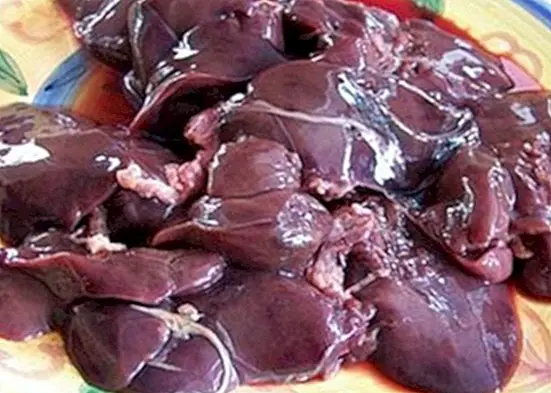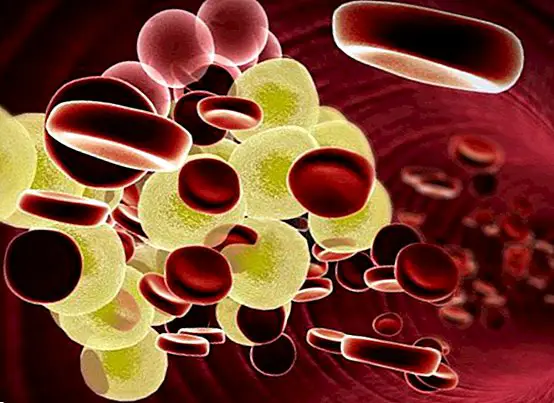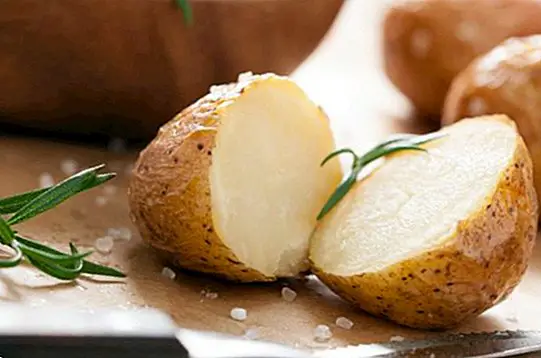Retinol: functions, lack, recommended amounts and rich foods
With the name of retinol it is also known the Vitamin A. In fact, although it is a not so popular denomination, the truth is that it can be a good indicator of its beneficial action on the retina of the eye.
Retinol is a fat-soluble vitamin, which means that it is a vitamin that needs fat to dissolve. In some vegetable foods (especially yellow and orange vegetables) we can find the so-called provitamin A, also known as carotene, which is transformed into retinol in the human body, and which provide an important antioxidant, anticarcinogenic and anti-cancer action. preventive of cardiac affections.

Retinol is stored both in the liver (in large quantities) and in the fatty tissue of the skin. When it comes to preventing food from losing this important essential nutrient, it is necessary to take into account that iron or copper cooking utensils can destroy it, as well as light and cooking at high temperatures.
Functions of retinol
- Essential for low-light vision, being a component of visual pigments.
- Participates in the preparation of liver enzymes.
- Fundamental in the development of the skeleton and tissues, since it participates in the synthesis of proteins.
- It helps in the formation of tooth enamel.
- Participates in the development of adrenal and sexual hormones.
- Necessary to keep superficial tissues and skin healthy.
Therefore, retinol helps positively in case of reproductive disorders, sensitivity to light (photophobia), night blindness, growth problems, bones and teeth, alterations of the defenses, dry and rough skin, fragile nails, and fall of the skin. hair.
Symptoms of retinol deficiency
A deficiency or lack of retinol can cause:
- Night blindness (when there is a long absence of at least one or two years).
- Alterations in the skin.
- Ulcers in the cornea.
- Loss of appetite and sense of taste.
- Hair loss.
- Keratinization of the mucous membranes that line the digestive, respiratory, urinary and skin pathways.
Recommended daily amount of retinol
Age | mens | Women | |
| 1-3 years | 400 mcg | 400 mcg | |
| 4-6 years | 500 mcg | 500 mcg | |
| 7-10 years | 700 mcg | 700 mcg | |
| From 11 years | 1000 mcg | 800 mcg | |
| Lactation | 6 months | 1200 mcg | |
| Pregnancy and lactation | After 6 months | 1300 mcg |
Foods richer in retinol
Here are the main food sources of retinol per 100 grams of food:
Food | Calcium content |
Liver | 20,000 mcg |
Foies and pates | 8.300 mcg |
Cod liver oil | 1,800 mcg |
Carrot | 1,346 mcg |
Grelos and nabizas | 1,000 mcg |
Eels and eels | 1,000 mcg |
Spinach | 942 mcg |
Margarine | 900 mcg |
Butter | 828 mcg |
Fatty cheeses | 800 mcg |
Eggs (chicken) | 740 mcg |
Sweet potato and sweet potato | 667 mcg |
Caviar | 560 mcg |
Spinach | 542 mcg |
Watercress | 500 mcg |
Image | AlyssssylA This article is published for informational purposes only. You can not and should not replace the consultation with a Nutritionist. We advise you to consult your trusted Nutritionist.


